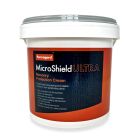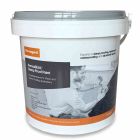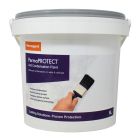Help & Advice Articles, Videos and How-to-Guides
Filter Articles

Treating Dampness in Walls
Dampness in walls can be a big problem for homeowners in the UK. The English Housing Survey reported that as many as 904,000 homes in England had problems with damp in 2021. Depending on the type and cause of the damp, it can lead to structural issues and can also impact your health. For this reason, it should be dealt with as soon as possible. Our guide outlines everything you need to know about identifying and treating dampness in walls.
What is dampness?
Dampness or damp is excess moisture in a building. It can be caused by many different things. If it’s not treated, it can lead to mould growth and damage to interior décor and furnishings.
More severe damp can cause damage to the structure of the building and lead to rotting timbers or wooden features. It can also affect your health - exacerbating existing conditions. The most common causes of damp are condensation and penetrating damp, with rising damp being a rarer form of damp.
For explanations of more damp and waterproofing terms, see our Permagard glossary.
What does damp look like on walls?
Depending on the type of damp, it can appear in different ways. Below are some common signs to look out for:
- Damp or peeling paint or wallpaper: Damp can cause wallpaper and paint to flake or peel. This can be a sign of condensation and rising or penetrating damp.
- Steamed-up windows and wet walls: If you have misty, steamed-up windows and your walls are wet to the touch, you probably have a condensation issue.
- Tide marks: Tide marks are discoloured damp stains generally seen no higher than one metre above the floor. They are caused by salts and minerals that are left when water evaporates from the wall. These are generally a sign of rising damp.
- Discolouration: This can be another sign of rising damp. The damp area will be discoloured to appear darker than the rest of the wall. It normally affects the lower half of the wall at ground floor level.
- Crumbling plaster: Powdery plaster or chunks of plaster falling from walls is a sure sign of damp. This can be caused by penetrating and rising damp or condensation.
- Smell: As well as its visual appearance, damp is often signified by a musty smell.
- Mould and mildew: Due to the excess moisture, damp often leads to the growth of mould and mildew. Find out more about what black mould is and what it looks like.
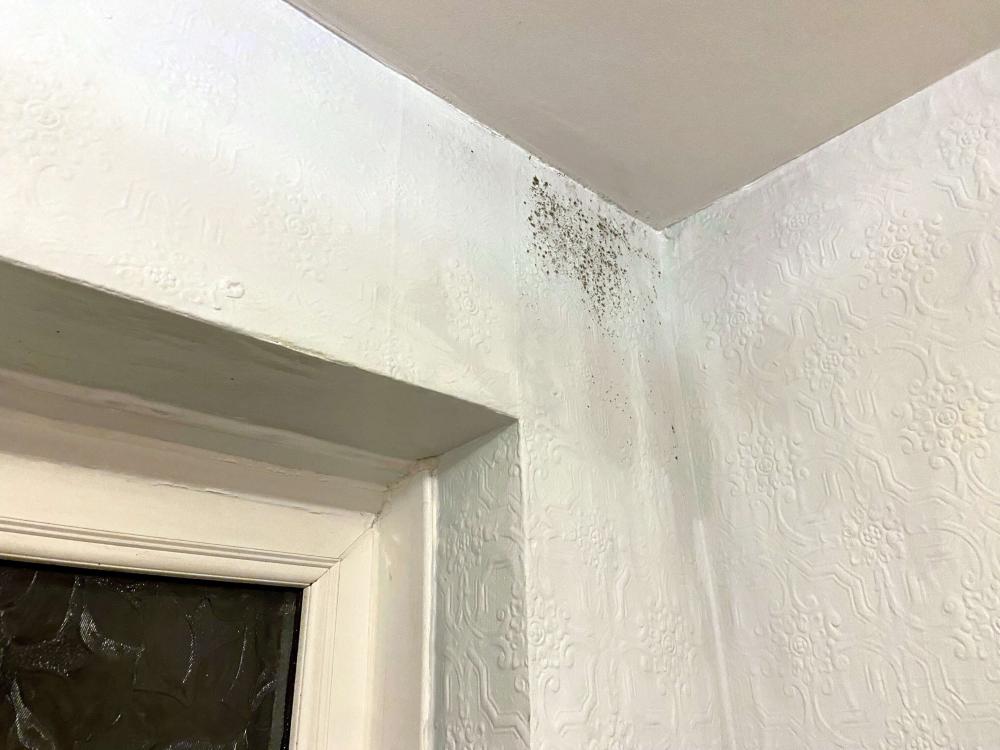
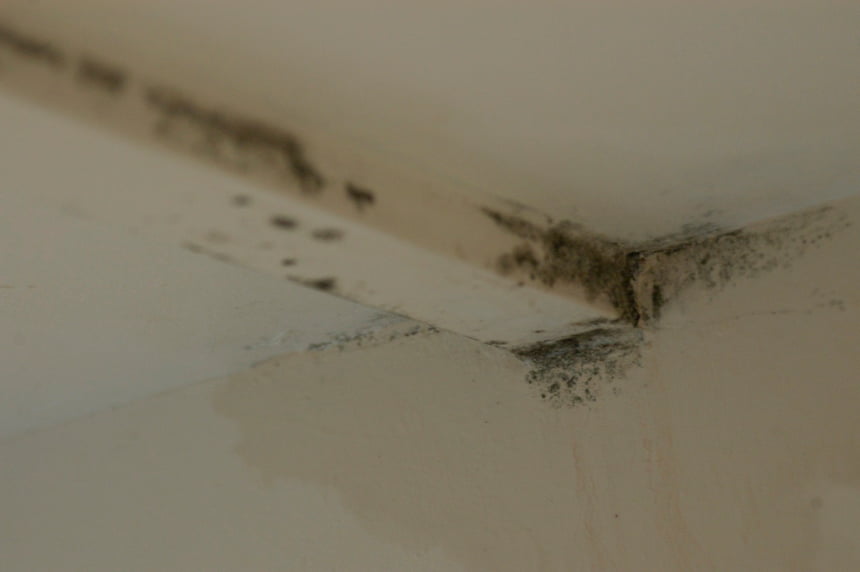
Effects of damp in walls
As well as looking unsightly, damp walls can have other effects, including causing cosmetic, structural and health problems.
- Cosmetic issues: Damp can cause damage to soft furnishings and decorations. Soft furnishings in damp environments can develop a musty smell and mould and mildew can damage upholstery. Wooden furniture can also be affected by high levels of moisture. Wood can rot or swell, and the finish can be damaged.
- Structural problems: If left untreated, damp can cause structural problems. Rotting timbers and rafters, collapsing joists and sagging ceilings are all potential consequences of a serious, untreated damp problem. These issues can be very costly to fix and potentially very dangerous.
- Health problems: The NHS states that mould spores can leave you more susceptible to developing a range of different health conditions, possibly triggering asthma. For more information read our guide to the health risks of damp and mould.
What causes dampness on internal walls?
As we’ve already discussed, depending on the type of damp it can be caused in different ways. Understanding what has caused your wall dampness is important, as this will determine how you fix it.
- Condensation: Condensation occurs when moisture in the air comes into contact with a cold surface. It’s often seen in areas like kitchens and bathrooms where there is high humidity, but it’s also common in bedrooms where people will release moisture through their breath as they sleep.
- Rising damp: Most buildings have a damp proof course (DPC) installed near the bottom of the wall to prevent water from rising up through capillary action. The DPC can be slate, bitumen or plastic. These can fail over time, and older properties may not have one at all. Without a functioning DPC, water can travel up the wall, resulting in rising damp. Sometimes, an existing DPC can be bridged if the ground externally is higher than the DPC.
- Penetrating damp: Penetrating damp happens when water enters the building from outside. This is usually due to a building fault such as an issue with the roof or masonry, a blocked gutter or render or pointing that isn’t working as it should be.
Causes of damp on external walls
Dampness on external walls is a common issue. In a wet climate like the UK’s, buildings are frequently exposed to rain. This becomes an issue when the rainwater is absorbed into the brickwork. Normally, this is because of a blocked or leaking gutter or downpipe preventing water from being efficiently channelled away from the building. It can also be caused by an issue with the building structure, a plumbing issue or DPC failure. For more information read our guide on identifying and resolving damp issues on external walls.
Dampness in basement walls
Dampness in basement walls can be caused by condensation or water ingress due to something called hydrostatic pressure. Water in the ground surrounding a basement exerts pressure on the basement walls. This is hydrostatic pressure. If the ground is saturated, this can put a huge amount of pressure on the walls. Any cracks, joints and structural flaws can allow water to force its way through.
Fixing dampness in basement walls requires a different solution to dampness in walls above ground. You can either block the passage of water into the building with external and structural waterproofing or tanking internally, or you can control water flow to an evacuation point with a cavity drainage system.
For more information, see our basement waterproofing section.
How to test for dampness in walls
It’s always important to get a professional to diagnose the type and cause of any dampness in your home. The following is a top-level overview of some warning signs you can identify:
- Look: Sometimes identifying dampness can be as simple as observing it. Can you see mould, tide marks or patches discoloured by damp? If so, you can be confident that you have a damp problem.
- Touch: Touching your walls to determine if they’re excessively cold or wet can also help you identify dampness.
- Foil test: If you’ve noticed a damp problem but aren’t sure if it’s caused by condensation or penetrating or rising damp, you can use a foil test. Tape a square of aluminium foil to the wall and leave it there for a day. On inspection, if the side facing away from the wall is wet, you have an issue with condensation. If the inside of the foil is wet, you have penetrating or rising damp. Don’t take this as gospel, but it can point you in the right direction when contacting a specialist company.
- Damp survey: Before undertaking any work to rectify an issue in your home, we recommend consulting a PCA-approved specialist who can measure the extent of the damp in your walls and recommend appropriate treatment.
How to measure dampness in walls
Electrical damp meters or moisture meters are often sold as a way to measure dampness in walls. However, they are not effective. Electrical moisture meters cannot provide a reliable measure and can’t be relied upon for an accurate assessment of damp. Always consult a PCA-approved specialist who will use a range of diagnostic tools to accurately measure the extent of the dampness.
How to get rid of dampness in walls
After identifying the type of dampness you have, it’s important to treat it so it doesn’t cause further issues. The type of dampness determines the treatment required to fix it.
How to stop wall condensation
There are several things you can do to stop or drastically reduce condensation on walls:
- Improving ventilation: This helps moisture-laden air escape from your home.
- Producing less moisture: This might sound obvious, but being mindful of the activities that may cause excess moisture inside your house will help you reduce condensation.
- Maintaining a consistent interior temperature: Fluctuating temperatures inside your home can increase condensation. If you maintain a consistent temperature in all rooms, it will help to reduce the number of cold surfaces that humid air can settle on.
- Anti condensation paint: Anti Condensation Paint contains a special formula that raises the temperature of the wall, meaning that condensation will take much longer to form.
Read our guide for more information about preventing condensation.
Penetrating damp
As penetrating damp is generally caused by an issue with the building, identifying this is the priority. Once the cause of the dampness has been correctly identified (a damp surveyor can be useful in ensuring you’ve found the true cause), it should be repaired by a professional.
Once the underlying damp issue has been resolved, chances are you will need to replaster the affected area. Applying a PermaSEAL Damp Proof Membrane will create a physical barrier between the wall and the new finish. This prevents further damage and salt contamination. Installation is straightforward, and our kits include everything you need. You can find more about installing a damp proof membrane.
If you need to re-plaster after sorting a damp problem, use a breathable plaster system such as Limelite. With a quick drying time, Limelite is a key component in a permanent solution to damp and mould. For more information about replastering with Limelite, see our guide.
Rising damp
Rising damp can be a difficult problem to solve. The cheapest and most straightforward way to deal with rising damp once it’s been confirmed is with a damp proofing injection cream. An alternative, but much more complicated solution, is installing a physical damp proof course. Read our complete guide to treating rising damp.
See our guide for more information about the difference between damp proofing and waterproofing.
How to stop dampness in walls from returning
It’s important that the underlying cause of the dampness has been identified and resolved. Once this has been fixed, it’s good practice to keep an eye on the warning signs of damp and the condition of your roof and guttering to ensure any issues are fixed before penetrating damp develops. To avoid condensation, ensure that all rooms in your property have good ventilation. A whole-house PIV system can eliminate condensation by replacing humid air with fresh, filtered air from outside. Our guide contains more information about improving ventilation in your home.
As a preventative measure, applying MicroShield Ultra or PermaSEAL Facade Cream to your external walls or masonry will prevent penetrating damp from coming through to your internal walls.
Ultimately, if you can spot the signs of dampness and be proactive in preventing it, you’ll be able to tackle any issues before they become serious.
Damp wall solutions from Permagard
- MicroShield Ultra 5L - Masonry Waterproofing Cream: For external use, this professional masonry protection cream provides long-lasting water repellency to brickwork and façades. It offers long-term protection (25+ years) against penetrating damp.
- Damp Proof Paint: For internal use, this paint acts as a liquid damp proof membrane. Ready to apply straight from the bucket and quick drying, it forms a barrier against penetrating damp.
- Anti Mould Paint: Anti Mould Paints contain biocides that kill black mould and prevent it from returning. Our Anti Mould Paint is guaranteed to prevent the recurrence of black mould for a minimum of five years.
- Condensation Control Products: Work to reduce and prevent condensation in your property. These can be ventilation systems or products like Anti Condensation Paint.
- Damp Proof Cream: Damp Proof Injection Cream is a quick and easy way to treat rising damp in masonry building substrates. It’s injected into holes drilled in the mortar joint and penetrates the building’s substrate to create a new DPC.
Permagard - damp wall product suppliers
Permagard is proud to supply solutions to dampness in walls at affordable prices. If you are unsure which product would be the best for your situation or require any more information about using or applying them, please get in touch. You can call our expert team on 0117 982 3282 or contact us here.

